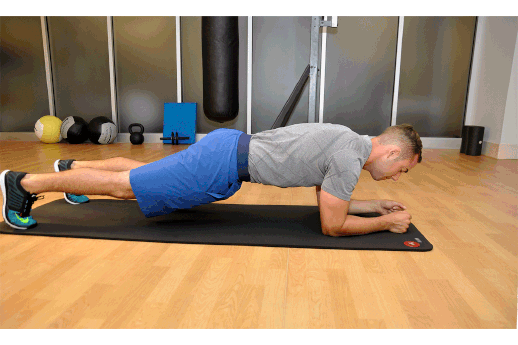Planks have been the most talked of exercise in recent days. Plank challenges have been all over the internet with people holding their positions from a few minutes to a few hours at a stretch. It is an exercise that engages a range of muscles, improves core strength and boosts your calorie burn. Let us know more about the benefits of this isometric exercise and understand the buzz around it.
What Are Planks?
Plank is a core strengthening exercise that works on improving your form, physique, and stability. The plank pose is a fundamental part of traditional Sun Salutations, also known as Phalakasana. It involves keeping up a position like a push-up for the most extreme possible time. This is the perfect strength training exercise as it works on abdominal muscles. Additionally, it strengthens your shoulder, chest, neck, glute, quadriceps, and back muscles.
Correct posture and variations

The most widely performed plank is the forearm plank which is held in a push-up-like position, with the body’s weight borne on forearms, elbows, and toes.
It is a modified push-up position with your elbows bent 90 degrees and both forearms resting on the floor. Elbows are positioned directly underneath your shoulders and look straight towards the floor. Your body should be in a perfectly straight line from your head to your heels. Keep your feet together with only your toes touching the floor. Draw in your abdominal muscles to squeeze your belly button up towards your spine while maintaining a straight back. Contract your quadriceps and gluteal muscles to firm your legs.
Hold this position for as long as you can, concentrate on keeping your abdominal and lower back muscles tightened to prevent sagging at the hips.
Keep The Following In Mind During Planks To Avoid Injury
The back should not be arched: If the back is arched abdominals are not engaged sufficiently and you are putting more of the weight onto your arms. Shoulders should be down and wide.
Sagging Hips: If your hips are sagging, try separating your feet a bit wider and focus on engaging your abs.
Head down: Your head should be in line with your body, not tilted up as it could strain the neck. Try gazing at the floor.
Take your own time to perfect the plank pose and once you reach there, you can go on to try variations such as the reverse plank, side plank, rocking plank, shoulder tap plank and many more.
Benefits of Practicing Planks Everyday
-
Strengthens Core:
It works on all four muscle groups in the stomach and strengthens the rectus abdominis (visual “six-pack” muscles), transverse abdominis (deep core stabilizing muscles), and the internal and external obliques (hip and back mobilizing muscles).
-
Increases Muscle Definition:
Plank also strengthens the muscles in your shoulders, chest, legs, and back. The isometric hold helps reinforce and build lean muscle to increase overall muscle definition on the body.
-
Heightens Metabolism:
The muscle strength attained through Plank improves metabolism and you burn more energy even when sedentary. Increase in your muscle mass, boosts your resting metabolic heart rate. This in turn results in greater calorie burn. It boosts your productivity and aids breathing.
-
Reduces Back Pain:
As your abdominal muscles become stronger, the body becomes less reliant on the overuse and overextension of the back muscles. Instead, your body resorts to the now stronger core for everyday activities and exercise, which reduces pain in the lower back.
-
Improves Posture:
This pose makes your spine, mid, and upper body muscles strong and healthy. Engaging the back, chest, shoulders, abs, and neck to organically adjust your body’s natural alignment.
-
Improves Balance:
Keeping your body stabilized during this difficult horizontal hold enhances your ability to stabilize in the more natural vertical state.
-
Enhances Bone and Joint Health:
New living bone tissues created on performing a plank, resulting in healthier and stronger bones. On top of that, it promotes circulation in the joints, which allows the bones to move past one another smoothly.
-
Boosts Mood and Relieves Stress:
Endorphins are known to relieve stress and increase feelings of happiness. It also aids in tension relief, as your body is encouraged to stretch and lengthen when performing the pose.
Don’t Do Planks like this..
With such diverse and rewarding benefits, it’s easy to understand why Plank is popular among yogis and exercise enthusiasts. Furthermore, a stronger core will increase your performance, so focus on improving the quality of your plank than the duration.


